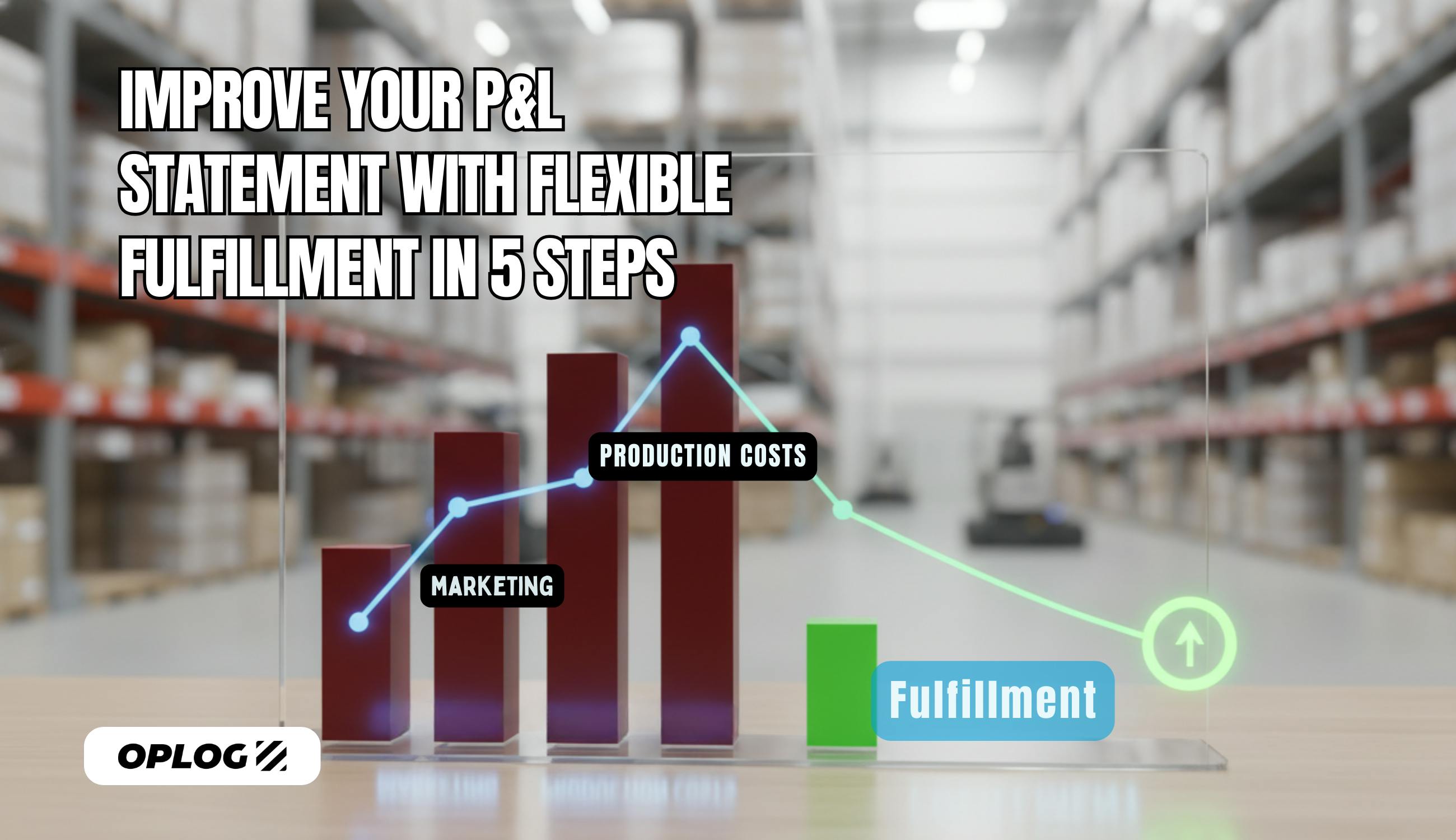Maintaining an efficient inventory management system is essential for any successful business. It is crucial to ensure that your inventory records match your physical stock. Inventory cycle count is a process that helps achieve this goal.
Doing a complete physical count of your inventory once a year can be time-consuming, disruptive, and prone to errors. Many businesses use inventory cycle count as an alternative inventory management method.
Inventory cycle counting is like a fitness routine: you have to do it regularly to keep your inventory healthy and avoid costly problems.
This comprehensive blog post will explore the world of inventory cycle counting, its significance, methods, benefits, and how to implement it effectively.
What is Inventory Cycle Counting?
Inventory cycle counting is a highly organized process that entails regularly counting a portion of your inventory items instead of doing a total physical count once a year.
Cycle counting guarantees regular precision in inventory records without causing significant interruptions. This helps to continuously recognize and correct any differences between recorded quantities and actual stock levels.
Methods of Cycle Counting
There are different methods of inventory cycle counting. Some of the standard methods are:
ABC analysis
This method divides the inventory items into three categories based on their value and frequency of sales: A (high value, high frequency), B (medium value, medium frequency), and C (low value, low frequency). The items in Category A are counted more often than those in Category B, which is more than those in Category C.
Random sampling
This method randomly selects a specific number or percentage of the inventory items to count each time. This way, every item has an equal chance of being counted over time.
High-value items
This method focuses on the inventory items with the highest value or impact on the business. These items are counted more frequently than the rest of the inventory.
Usage-based
This method ensures inventory accuracy for essential items by counting the ones used the most in production or sales. It prioritizes items that are crucial to the business.
Control group
This method counts a small group of items repeatedly in a short period to reveal any errors in the counting technique or system. This way, the counting process can be improved and standardized.
Opportunity-based
One approach to cycle counting involves tracking specific events in the inventory management process, such as when an item is ordered or put away. These events can trigger exception-based cycle counts, such as when stock levels fall below a predetermined threshold or when short-picks occur. For example, when an item is moved, received, or shipped, it can be counted as an opportunity.
Objective counting by surface area
This method counts the items based on their location or warehouse area. For example, one shelf, bin, or aisle can be counted as a unit.
Hybrid
This combines two or more of the above methods to create a customized cycle counting plan that suits the business needs and goals.
The best method for your business may depend on factors such as inventory turnover rate, seasonality, availability of resources, and accuracy goals.
Depending on the inventory's type, size, and complexity, these methods have advantages and disadvantages. The frequency of tracking your inventory cycle count also matters.
Let’s discuss,
Periodic vs. Perpetual Inventory Practices
No matter which inventory tracking method a company uses - periodic or perpetual - conducting regular cycle counting is crucial for effectively managing inventory counts.
A periodic inventory system only updates inventory records at the end of an accounting period, like a month, quarter, or year. In contrast, a perpetual inventory system updates inventory records constantly with every purchase or sale of goods.
The advantages of periodic inventory practices are that they are simple, inexpensive, and do not require sophisticated technology. However, the disadvantage is that it needs to provide timely and accurate information about the inventory levels and the cost of goods sold (COGS). Periodic inventory also requires a physical count of the inventory at the end of each period, which can be time-consuming, disruptive, and prone to errors.
The advantages of perpetual inventory practices are that they provide real-time and accurate information about the inventory levels and the COGS. A perpetual inventory also reduces the need for a physical inventory count, as it tracks every movement of goods in and out of the warehouse. However, the main disadvantages are that it is complex, expensive, and requires sophisticated technology. Perpetual inventory practices also require more record-keeping and reconciliation to ensure the inventory records match the physical inventory.
You should consider many factors when deciding whether to use a periodic or perpetual inventory system. These include the type, size, and complexity of the inventory, as well as the frequency and volume of sales and purchases. Other important considerations include the availability of resources and technology, as well as the accuracy goals of the business.
A periodic inventory practice is typically more appropriate for small businesses with simple inventories or low sales volumes. Conversely, large businesses with complex inventories, high sales volumes, or multiple retail locations may benefit more from a perpetual inventory system.
So,
Why is Inventory Cycle Count Important?
Inventory cycle counting is essential for several reasons:
Easily Identify Discrepancies
Regularly counting your inventory can help you keep optimal stock levels and prevent stockouts or overstocking. This practice also allows you to identify discrepancies or problems with your inventory system, such as theft, damage, or misplacement. Once you detect these issues, you can take corrective actions to adjust your stock levels and prevent any loss or customer dissatisfaction.
Enhance Customer Service
By maintaining accurate inventory records, you can enhance customer service and satisfaction by providing the right products at the right time. This enables you to fulfill customer orders quickly and efficiently while avoiding any delays or errors that may arise due to incorrect inventory data.
Reducing Costs and Risks
Full physical counts can be expensive and risky due to the need for a lot of labor, time, and resources. Additionally, these counts can disrupt normal business operations and result in inaccuracies due to human error. By spreading the counting process over time and minimizing disruption and error, inventory cycle count can help you avoid these problems.
Implementing Effective Cycle Counting
Let’s get into how to develop and execute a cycle counting program that suits your business needs and goals.
- Developing a cycle counting program
- Inventory Cycle Count Policy
- Inventory Cycle Counting Process
- Using Technology and Software
Developing a Cycle Counting Program
Before you start counting your inventory, you need to plan and design your cycle counting program. This involves deciding on the following factors:
SKU count
The number of distinct items or stock-keeping units (SKUs) in your inventory determines the complexity and time required for the cycle-counting process. Prioritizing or categorizing SKUs by their value, frequency, or importance is necessary to streamline the process.
Available resources
When planning cycle counting, it's crucial to consider human and technological resources. This includes considering the number and expertise of your staff, the availability and capacity of equipment, and the functionality and compatibility of software. Depending on the size and complexity of your inventory, you may need to allocate or invest in additional resources to ensure an effective cycle counting process.
Counting frequency
This is how often you will perform your cycle counts. The frequency depends on your inventory turnover rate, seasonality, and accuracy goals. Depending on their value, frequency, or importance, you may need to count some items more often than others.
Inventory Cycle Count Policy
After selecting your preferred cycle counting method and frequency, it's essential to establish an inventory cycle count policy. This policy should outline the roles and responsibilities of your staff, the procedures and standards for cycle counting, and the performance indicators and targets for cycle counting. Your inventory cycle count policy should include the following:
Roles and responsibilities
Designate a staff team to ensure accurate cycle counting. Each member should have clear roles and duties, such as selecting items to count, performing counts, recording and reconciling counts, investigating and correcting discrepancies, monitoring and evaluating results, and reporting and communicating findings. By defining these responsibilities, you can ensure a smooth and efficient process.
Procedures and standards
You need to establish a set of procedures and standards for cycle counting that ensure consistency and accuracy. Provide clear instructions and guidelines for each step of the cycle counting process, such as how to select the items to count, how to use the equipment and software for counting, how to verify and validate the counts, how to handle any exceptions or issues during counting, how to update and maintain the inventory records after counting, etc.
Performance indicators and targets
You need to define a set of performance indicators and targets for cycle counting that measure your progress and success. Set realistic and achievable goals for your cycle counting program based on your inventory characteristics and business objectives. Some of the common performance indicators are inventory accuracy, inventory variance, inventory adjustment, cycle count frequency, and cycle count coverage.
Inventory Cycle Counting Process
Once you have created your cycle counting program and policy, it's time to begin implementing the cycle counting process. This process involves four key steps:
Step 1 - Select the items to count
Select the items you will count for each cycle based on your cycle counting method and frequency. You can use a software tool or a manual list to generate and assign the items to your staff. You should also consider the availability and location of the items when selecting them.
Dealing with inventory management manually or using basic tools can be difficult and lead to mistakes. OPLOG's Warehouse Management System (WMS) and Order Management System (OMS) software are designed to simplify and automate your inventory management processes, including cycle counting. Learn more about how OPLOG can revolutionize your inventory management.
Step 2 - Perform the counts
Count the selected items in their locations using a barcode scanner, a mobile device, or a paper list. Follow the procedures and standards that you have established for cycle counting. Verify and validate the counts with the item codes, descriptions, quantities, and units of measure. Avoid disruptions or interruptions during counting, such as customer orders, deliveries, or movements.
Step 3 - Record and reconcile the counts
Compare the quantities you have counted with the recorded amounts in your inventory system and take note of any differences. If you find any issues or discrepancies in your inventory system, such as theft, damage, or misplacement, please investigate and correct them. Make the necessary adjustments to your inventory records and generate reports to keep track of your cycle counting performance.
Step 4 - Review and improve:
Regularly monitor and evaluate your cycle counting results and performance. Identify any areas of improvement or opportunities for optimization. Adjust your cycle counting method, frequency, or schedule as needed. You can also use benchmarks or metrics to measure your progress and compare it with your goals or industry standards.
Working with a fulfillment company like OPLOG, you can rest easy knowing that these cycle processes are handled seamlessly.
Using Technology and Software
Technology and software can facilitate and enhance your cycle counting process. By using technology and software like OPLOG One, you can:
- Automate and streamline your cycle counting process by generating and assigning the items to count, scanning and recording the counts, reconciling and updating the inventory records, and reporting and analyzing the results.
- Integrate your cycle counting process with other aspects of your business, such as sales, purchasing, accounting, and customer service.
- Improve your cycle counting accuracy and efficiency by reducing human error, saving time and labor, and increasing productivity and profitability.
Wrapping Up…
Inventory cycle counting is an essential process for businesses of all sizes. By conducting regular counts, you can ensure that your inventory records are accurate and up-to-date, which can help you make better business decisions.
It also helps to identify any discrepancies and prevent inventory shrinkage. Whether you conduct cycle counts manually or with the help of an automated system like OPLOG, the benefits of this process are invaluable. So, integrate inventory cycle counting into your regular operations and watch your business thrive!






